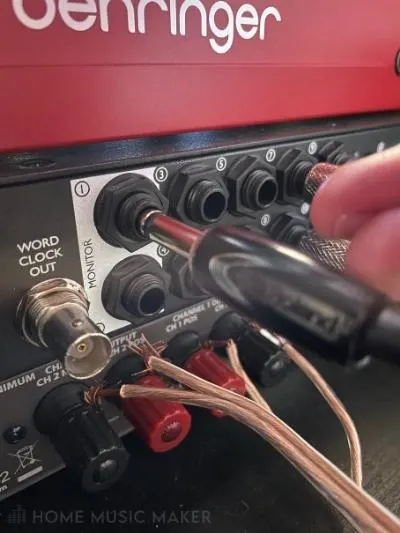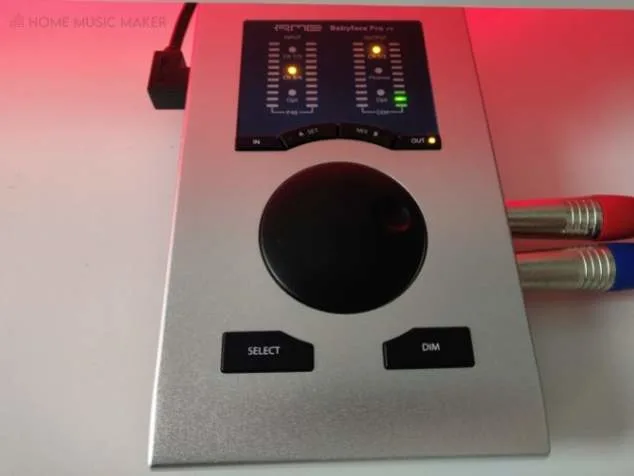If you are not hearing any audio output from REAPER, you can fix this by first checking all of your hardware, gear, and cable connections. If you are still having the issue, select Options>Preferences>Device in REAPER and select/adjust the settings of the desired audio system.
No Sound In REAPER
Producing music without being able to hear any audio from your DAW (Digital Audio Workstation) is obviously impossible.
There is nothing worse than sitting down to produce music and dealing with technical difficulties such as not being able to get any sound from REAPER.
In this step-by-step article, I will show you how to get sound to output from REAPER if you have an issue with it.
What You Will Need To Follow This Tutorial
The only thing you will need to follow in this tutorial is the REAPER DAW itself.
The only exception is if you need to replace a cable or other hardware component in your recording setup.
Step One – Checking Your Hardware/Connections
The first step for restoring sound in REAPER is double-checking all of your hardware and connections.
Cables
Start by checking your speaker cables, headphone cables, power cables, etc. A good way to check your cables is to test them out with other devices.

If you have a faulty cable, it could be causing your audio monitoring issues, so start by replacing it before moving on.
Speakers/Headphones
The next thing to check is the headphones or speakers you monitor with.
You can do this by testing them with another device or by using another app on your computer since REAPER is the audio issue here and not your whole computer.
Audio Interface
The final thing to test out is your audio interface.
To test your audio interface, simply play another source of audio other than your DAW through it to verify that it is working correctly.

After you have tested out your cables, connections, speakers/headphones, and audio interface to verify that your issue is not audio hardware related, you can move on to the next step.
Step Two – Selecting Your Device/Changing Your Settings
The next step to solving your audio monitoring issue is changing around your REAPER preferences.
Start by clicking Options>Preferences>Device in REAPER, and then choose your audio system from the drop-down list.
If you do not see your device on the drop-down list, this indicates that your computer is not recognizing your audio device or that you need to download an audio driver for your device.
To fix this, find an instruction manual from the manufacturer and troubleshoot.
If it’s an audio driver issue, the manufacturer should provide you with a free download link.
To find a download link, start by checking the manufacturer’s website.
Step Three – Change Your Computer’s Settings
One last thing to consider when fixing a monitoring issue in REAPER is your computer’s audio settings.
It’s called something different on each operating system, but find your device’s audio or sound settings and make sure your computer recognizes your audio device and is connected.
If you go through these steps carefully and troubleshoot along the way, you will fix your audio monitoring issue in REAPER!
Why Can’t I Hear Anything In REAPER?
If you have all of your audio hardware, cables, and connections set up correctly, and you still can’t hear anything in REAPER, you probably need to assign your audio device in REAPER preferences.
Select Options>Preferences>Device and choose your audio device from the drop-down menu. If your device is not listed on this menu, you probably need to download an audio driver for your device. This will be available to you from the manufacturer.
If you complete this step and still can’t hear anything in REAPER, try opening up your computer’s audio or sound settings and make sure that your audio device is connected to and recognized by your computer.
How Do You Get Sound In REAPER?
You get sound in REAPER by properly setting up your computer, audio interface, speakers/headphones, and all cables and then configuring your settings in both REAPER and your computer.
Sometimes this process requires a bit of troubleshooting. Just take your time, be patient, and stick with it and you will figure out your sound issue in REAPER.
Does REAPER Support ASIO?
Yes, REAPER does support ASIO.
In fact, on my two previous computers that both ran Windows, I used ASIO as my only sound card/audio driver.
In my time using ASIO on these two computers, they fixed my latency issues and worked great with REAPER.
Here is a link to a free download for the ASIO version that I use.
How Do I Change Audio Output In REAPER?
You change audio output in REAPER by selecting Options>Preferences>Device and choosing your desired output device from the drop-down ‘Audio system‘ menu.
This is a quick and easy way to change your audio output in REAPER.
How Do I Enable Record Monitoring In REAPER?
To enable record monitoring in REAPER, toggle the ‘Record monitoring’ button on any given track until it is in the ‘ON’ position.
You can also select multiple tracks and change their monitoring settings simultaneously.
Check out the following guide to disable monitoring in REAPER.
Can You Use REAPER Without An Audio Interface?
Yes, you can use REAPER without having an audio interface. However, you will have a much harder time recording and properly monitoring in your home studio.
To use REAPER without an audio interface, you can use a USB microphone to record and headphones via your computer’s headphone jack to monitor.
However, keep in mind that it is ideal to have an audio interface for your studio setup.
Related Questions
What Is It that Other DAWs Have that REAPER Doesn’t?
The main thing that REAPER lacks that other DAWs such as Studio One, Logic Pro, and Pro Tools all have covered is a decent virtual instrument plugin collection.
While REAPER is an excellent DAW that you can use for all types of music production, it does not have a single virtual instrument plugin other than ‘ReaSynth,’ a low-quality synthesizer engine.
Does REAPER Have a Guitar Tuner?
While REAPER does not have a guitar-specific tuner, you can use the tuner on the ‘ReaTune’ plugin to tune your guitar.
This plugin is for vocal tuning, but you can still use it to tune other instruments.
What Are Some Features that You Really Like About REAPER?
Some of my favorite things about REAPER are its low price, its simple setup and workflow, and its customizability.
Not only is REAPER quite affordable compared to other DAWs and easy to use, but you can also customize its visual display, toolbars, and hotkeys to suit your music production and recording needs.
Click here for a complete guide on how to fix latency in REAPER.

 Want to connect with other music producers for help and guidance?
Want to connect with other music producers for help and guidance?